
West Carroll Parish is a parish located in the northeastern part of the U.S. state of Louisiana. As of the 2010 census, the population was 11,604. The parish seat is Oak Grove. The parish was founded in 1877, when Carroll Parish was divided.
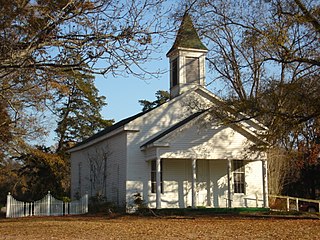
Richland Parish is a parish located in the North Louisiana Delta Country in the U.S. state of Louisiana, known for its fertile, flat farmland, cane brakes, and open spaces. The name Richland was chosen due to the rich production from farming. The parish seat and largest community is Rayville.

Ouachita Parish is located in the northern part of the U.S. state of Louisiana. As of the 2010 census, the population was 153,720. The parish seat is Monroe. The parish was formed in 1807.

Morehouse Parish is a parish located in the U.S. state of Louisiana. As of the 2010 census, the population was 27,979. The parish seat is Bastrop. The parish was formed in 1844.

Caldwell Parish is a parish located in the U.S. state of Louisiana. As of the 2010 census, the population was 10,132, making it the fifth-least populous parish in Louisiana. The parish seat is Columbia. Most residents live in the country even beyond the three rural communities in the parish.

Lake Providence is a town in, and the parish seat of, East Carroll Parish in northeastern Louisiana. The population was 5,104 at the 2000 census and declined by 21.8 percent to 3,991 in 2010. The town's poverty rate is approximately 55 percent; the average median household income is $16,500, and the average age is 31.

Monroe is the eighth-largest city in the U.S. state of Louisiana, and parish seat of Ouachita Parish. With a 2020 census-tabulated population of 47,702, it is the principal city of the Monroe metropolitan statistical area, the second-largest metropolitan area in North Louisiana.

The Ouachita River is a 605-mile-long (974 km) river that runs south and east through the U.S. states of Arkansas and Louisiana, joining the Tensas River to form the Black River near Jonesville, Louisiana. It is the 25th-longest river in the United States.

North Louisiana, also known locally as Sportsman's Paradise, is a region in the U.S. state of Louisiana. The region has two metropolitan areas: Shreveport-Bossier City and Monroe-West Monroe; the Shreveport area is the largest metropolitan area by population in North Louisiana.
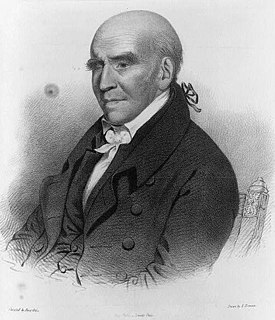
Stephen Girard was a naturalized American philanthropist, banker, and slave owner of French origin. He personally saved the U.S. government from financial collapse during the War of 1812, and became one of the wealthiest people in America, estimated to have been the fourth richest American of all time, based on the ratio of his fortune to contemporary GDP. Childless, he devoted much of his fortune to philanthropy, particularly the education and welfare of orphans. His legacy is still felt in his adopted home of Philadelphia.

Louisiana Highway 15 (LA 15) is a state highway located in central and northern Louisiana. It runs 194.10 miles (312.37 km) in a north–south direction from the junction of LA 1 and LA 970 in Lettsworth to the concurrent U.S. Highways 63 and 167 in Lillie. The middle portion of the route, extending 56 miles (90 km) from Ferriday to just north of Mangham, is co-signed with US 425 and is a major four-lane highway through the area.
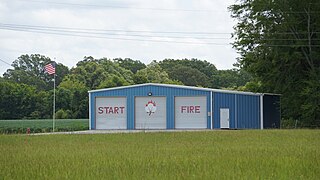
Start is an unincorporated community and census-designated place in Richland Parish, Louisiana, United States. In 2010, it was named as a census-designated place with a population of 905. On September 8, 2018, Start held a community wide celebration in recognition of its centennial year as the named place of Start.

Louisiana Highway 139 (LA 139) is a state highway located in northeastern Louisiana. It runs 20.20 miles (32.51 km) in a north–south direction from U.S. Highway 80 (US 80) in Monroe to the junction of US 165, US 425, LA 2, and LA 593 in Bastrop.
John Clyde Morris III is a businessman and attorney from Monroe, Louisiana. A Republican, Morris has been a member of the Louisiana State Senate for the 35th district in North Louisiana since 2020. From 2012 until 2020, Morris was a member of the Louisiana House of Representatives from District 14, which encompasses Ouachita and Morehouse parishes in the northeastern portion of his state.

William Denis Brown III was a Democratic lawyer and businessman from Monroe, Louisiana, who was a member of the Louisiana State Senate from 1968 to 1976.
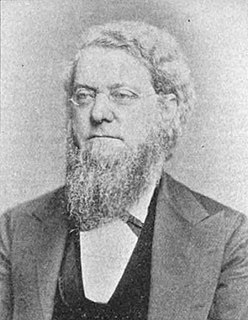
John Theodore Ludeling was Chief Justice of the Louisiana Supreme Court from November 1, 1868 to January 9, 1877.

Moses J. Liddell was born in Louisiana and appointed Justice of the Territorial Montana Supreme Court, by President Grover Cleveland, serving from 1888 to 1889.
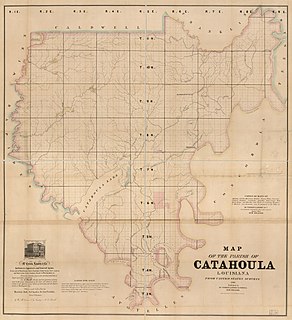
The Jones–Liddell feud (1847-1870) also known as the Liddell–Jones feud or the Black River War was a warring dispute between two prominent families from Catahoula Parish, Louisiana. It resulted in the death of at least six people, with other estimates suggesting as many as fourteen.





















